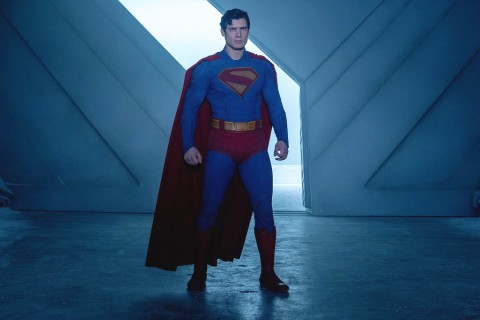Dogged pursuit
Merging a love story with a political thriller is a daunting challenge for a filmmaker. I remember seeing Warren Beatty's Reds in 1981 and thinking that while the John Reed-Louise Bryant love story was engaging, Beatty could have used help from someone like Constantin Costa-Gavras in staging the scenes of political revolution. When I saw Costa-Gavras's Missing just a year later, I was impressed by the high-tension scenes on the streets of Chile, but underwhelmed by the personal dramas. Perhaps he could have used the input of someone like Beatty.
John Malkovich faced a similar dilemma in The Dancer Upstairs, his feature-film directing debut. Though the film--scripted by Nicholas Shakespeare and based on his 1995 novel--is ostensibly about the search for a political terrorist in an unnamed Latin American country (clearly meant to be Peru), the framework holding the story together, at least in the novel, is the passionate love story between the policeman in charge of the investigation and a mature dance teacher who may or may not have a connection to the violent fugitive (ergo the title).
The fugitive's name is Ezequiel (named after the sixth-century prophet who foretold doom for those nations that didn't obey God's laws), and the film is at its dramatic best early on as it reveals how the Maoist terrorist movement Shining Path developed. It started with placards and political slogans, followed by the gruesome image of dead dogs hanging from light poles. (In China, a dead dog symbolizes a tyrant who has been condemned by the masses.) Things escalated quickly: dogs were used as galloping grenades, followed by child suicide bombers.
Colonel Augustin Rejas (played by Spanish actor Javier Bardem) is on the case, but it is a difficult assignment. Not only have Ezequiel and his lieutenants evaded authorities for years, but Rejas is a highly moral man who can understand the despair of the revolutionaries, even if he despises their brutal actions (which include kidnaping, torture and murder). Earlier in his career, Rejas was an unwilling part of the corrupt government. He quit his high-paying job to become a policeman, hoping he could make a difference at the local level.
The film follows Rejas's dogged pursuit of Ezequiel with precision and aplomb, slowing down only occasionally to examine his relationship with his wife (who seems blissfully unaware of what is happening around her), his daughter (who dreams of becoming a dancer), and his partners (who love and respect their clear-thinking boss). A relationship that is given short shrift, though it is central to the novel, is that between Rejas and dance teacher Yolanda (Italian actress Laura Morante from The Good Son). She is a passionate artist and idealist who happens to have Rejas's daughter as a dance student. In the film, the romance feels added on, like a B-story appendage, there for the sole purpose of showcasing Morantes's acting skills (and her physical attributes in a leotard).
The problem--and it is not a small one--is that in Shakespeare's novel the love affair and the manhunt are inseparable, since Yolanda represents the ideals that led Rejas to become an officer of the law in the first place. Instead of juxtaposing the sweet but clandestine love meetings with Rejas's life-threatening investigation, the film seems content merely to suggest the burgeoning relationship between the cop and the dancer.
This dramatic omission doesn't ruin the film, thanks to a number of saving graces. First and foremost is the performance of Bardem, who at 33 is quite convincing as a man wise (and saddened) beyond his years. His acting chops make the investigative scenes quite strong, including powerful exchanges with terrified villagers in the small mountain town where Rejas grew up (he is part Indian), and a bloody commando raid gone awry that leads to the violent death of a teenage terrorist whose battle cry is "Viva El Presidente Ezequiel!" Malkovich is also at his best during these tense sequences, exhibiting impressive patience in revealing a key piece of information and in choreographing a dramatic confrontation.
A secondary problem with the film is the decision to have the entire cast speak English. It may be an understandable choice to aim for the American market (especially for a movie that had so much trouble getting financed), but it presents difficulties for the lead actors. Many of the key scenes come across as forced and hesitant simply because the actors are struggling with the language.
The Dancer Upstairs is an impressive first film for Malkovich, even if it suffers from a few curious writing and directing decisions. It is intriguing and instructive as a tale of moral ambiguity, though its story of divided loyalties is not quite complex enough to be deeply compelling.



